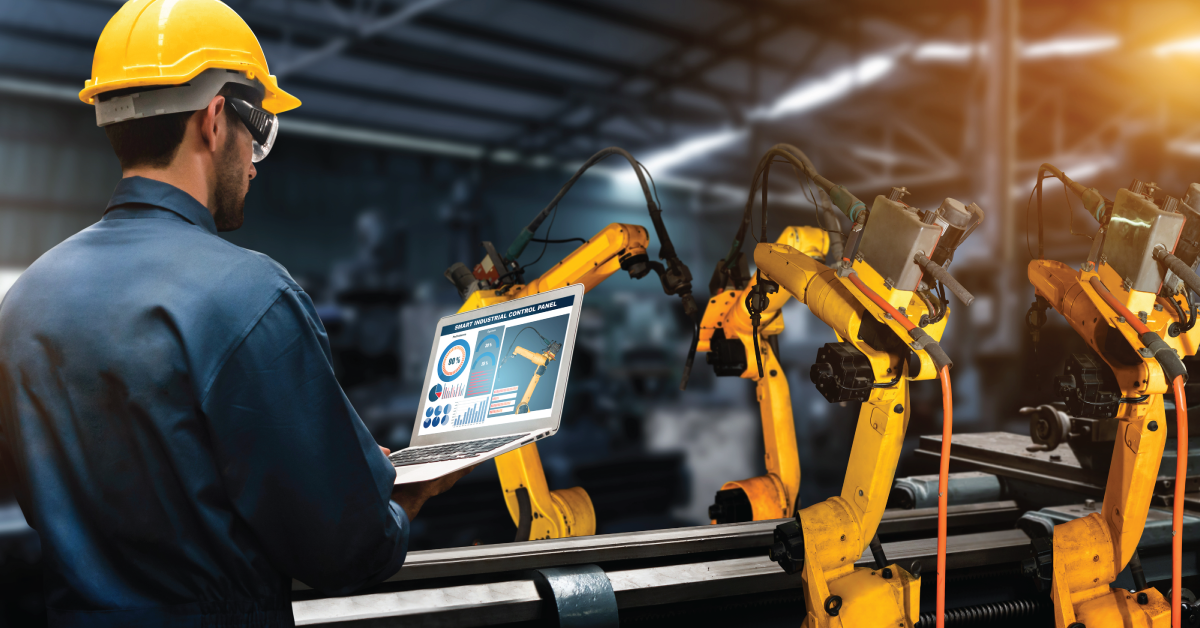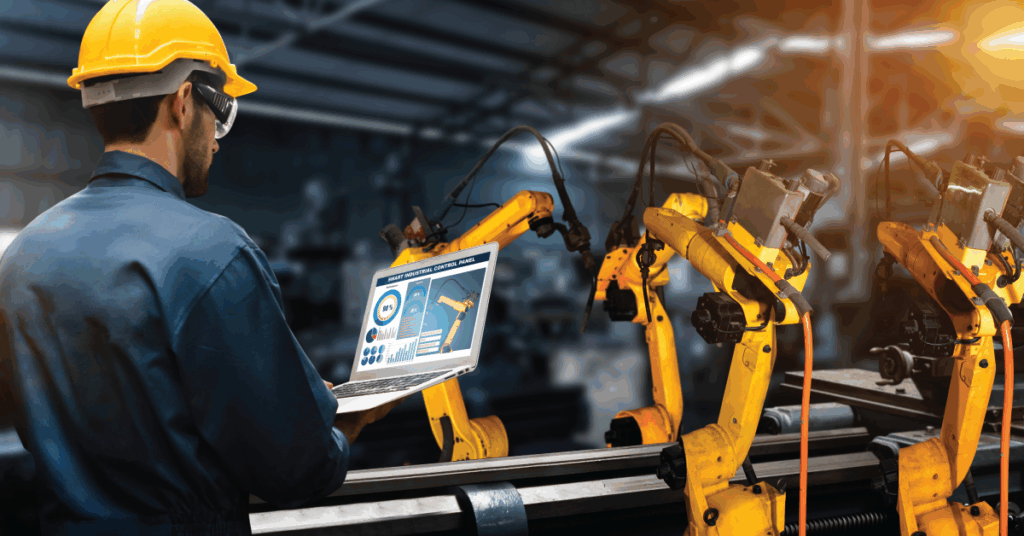

Jason Fedy, CFO Eclipse Automation and Managing Director, Industry X Accenture
Navigating risk and uncertainty in automated manufacturing projects doesn’t have to keep you up at night
The boardroom falls silent as the proposal wraps up. It’s a serious investment in cutting-edge automation, but the potential ROI is undeniable: increased throughput, reduced labor costs, improved quality. But when discussion resumes, it quickly turns to talk of shifting regulations, evolving customer demands, impending trade wars, supply chain disruptions, and an unclear tariff environment—all sources of uncertainty. “What if we commit millions to this new plant project, and then everything changes?” is the question on everyone’s mind, and they’re not alone. Concerns about uncertainty can freeze automation decisions in manufacturing companies worldwide.
With so much volatility, coupled with accelerating technological change, manufacturers today are facing unprecedented levels of uncertainty when planning smart factory automation investments. Many find themselves caught between the need to remain competitive and the fear that today’s automation decisions might become tomorrow’s stranded assets.
In this article
- Automated manufacturing projects face significant risks in today’s unpredictable business environment, including technology obsolescence, market shifts, and regulatory changes
- Traditional fixed automation creates vulnerability to external changes, while flexible manufacturing systems provide adaptability to uncertain futures
- Successful risk mitigation strategies include phased implementation, comprehensive assessment, strong governance, and developing flexible capabilities
- Real-world examples demonstrate how companies have used flexible automation to navigate uncertainty while achieving competitive advantages
The risk landscape is changing, and manufacturers are automating in response
Traditionally, the most successful approach for manufacturers focused on maximizing efficiency for a specific production scenario, which meant optimizing for a fixed set of assumptions about the future. The significant upfront capital investments required for manufacturing automation solutions, coupled with uncertain payback periods in volatile markets, has always created financial vulnerability. But as uncertainty increases, the conventional wisdom is starting to tip in favor of flexibility.
“The manufacturing automation risk profile has evolved dramatically in recent years,” notes Jason Fedy, Chief Financial Officer at Eclipse Automation. “Where technical implementation risks once dominated our discussions, we now spend just as much time analyzing market uncertainties, geopolitical factors, and the need for future adaptability.”
In this kind of business environment, fixed manufacturing automation systems designed for specific products or volumes carry extra financial risk when market conditions change.
Flexible manufacturing solutions, on the other hand, are designed to adapt to changing conditions without significant retooling or reconfiguration costs. In the past, production line flexibility often lost out to the efficiency and lower capital investment of more fixed, optimized alternatives. But in addition to growing uncertainty, the nature of manufacturing automation is shifting as well, in ways that reduce the trade-offs between efficiency and flexibility that we once took for granted.
This is why more forward-thinking manufacturers are responding to an accelerating, volatile market not by delaying automation implementation, but pushing forward with it as a way of risk management. Modern flexible manufacturing is enabled by technological advances in several key areas.
- Modular system design allows components to be reconfigured as needs change.
- Advanced robotics and collaborative robots (cobots) can be quickly redeployed and reprogrammed for different tasks.
- AI and machine learning enable systems to optimize processes in real-time.
- Digital twins allow manufacturers to test changes virtually before physical implementation.
The automotive industry showcases the power of this approach. One manufacturer implemented a flexible system capable of handling 12 different vehicle models on a single production line—something that would be impossible with traditional methods. So when consumer preferences shift from sedans to SUVs, for example, the production line can quickly adapt with less additional capital investment than competitors with fixed production constraints.
For similar reasons, medical device manufacturers including GE Healthcare Technologies, Johnson & Johnson, and Philips NV report investing heavily in digital manufacturing solutions such as the Internet of Things (IoT) and data analytics to monitor production chains in real-time.
Consumer industrial manufacturers stand to gain just as much from flexible production lines, if not more. One of Eclipse’s recent programs had us working with a North American valve manufacturer to develop a line capable of producing both male and female valves. This provided not only more flexibility in the face of unpredictable demand, but actually increased their overall capacity, allowing them to produce in one shift a volume of valves that previously took two.
Building a risk-mitigated approach to manufacturing automation
Leading manufacturers like these use several key strategies to reduce risk while maximizing the benefits of automation:
- Phased Implementation – Rather than big-bang deployments, the most successful companies take incremental approaches that allow for learning and adjustment. This enables validation of concepts and course correction before full-scale commitment.
- Comprehensive Risk Assessment – Effective risk management begins with thorough assessment of potential challenges across technical, market, financial, regulatory, and workforce dimensions. By identifying risks early, manufacturers can develop targeted mitigation strategies.
- Strong Governance Structure – A well-defined governance system with regular communication between business teams, technology teams, and senior management ensures that issues are identified and addressed promptly.
- Data-Driven Decision Making – By leveraging existing manufacturing data, companies can identify patterns, predict potential issues, and optimize automation strategies based on real-world performance.
Workforce Development – Successful organizations recognize that flexibility requires more than technology—it demands workforce capabilities that enable adaptation. By investing in technical teams with the skills to reconfigure automation systems, manufacturers create the organizational agility to respond to uncertainty.
Turning uncertainty into competitive advantage
The competitive advantage in modern manufacturing doesn’t come from having the most automation—it comes from having the most adaptable automation. By designing systems that can evolve with changing requirements, manufacturers can confidently invest today while maintaining the agility to address tomorrow’s challenges.
“The most successful manufacturers have fundamentally changed how they think about automation,” observes Jason Fedy, CFO Eclipse Automation, Managing Director Accenture Industry X. “They’re no longer asking ‘How do we automate this specific process?’ Instead, they’re asking ‘How do we build automation capabilities that can adapt to whatever our business requires in the future?’”
By embracing flexible manufacturing approaches and implementing robust risk mitigation strategies, manufacturers can transform uncertainty from a threat into an opportunity for sustainable competitive advantage. The future belongs to those who can execute automation strategies that deliver immediate benefits while maintaining the flexibility to evolve.

Learn how Eclipse Automation can help your organization develop flexible automation strategies that mitigate risk while delivering performance in uncertain times.
